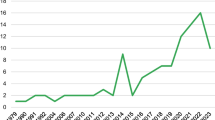Abstract
In the changing multi-ethnic South African society of the nineties, language planning has become a top priority on the national agenda of reform. Comprehension of the territorial dimensions of language is crucial if we are to penetrate its true cultural, economic and political effect. South Africa's language policy, as defined in the interim constitution, focuses mainly on the fact that in future the country will accommodate eleven official languages with equal status. Obviously, the nine provinces do not each have eleven official languages. A provincial legislative may, by a two-thirds majority vote, declare any of the national languages a provincial official language for the whole province or a part thereof. In the light of this it is of vital importance that the country's regional language patterns be analysed on a geographical basis. A visual and statistical representation of the geolinguistic realities in South Africa could support the planning and transformation process currently taking place at all levels of government in this multilingual country. The aim of this paper is to address the following geolinguistic issues on a national scale:
-
The spatial identification of the official language distribution on a macro level;
-
The time-space pattern of language change between 1980 and 1991;
-
The demographic and socio-economic profile of language speakers;
-
The consequences of the findings for ethno-linguistic restructuring in a post-apartheid South Africa.
The analysis of the 37 million people's first home languages in South Africa has been accomplished by utilizing an ARC/INFO Geographical Information System linked with the 374 statistical districts. Although the country is ethnically and culturally very diverse, three language groups, namely isiZulu, isiXhosa and Afrikaans, dominate the linguistic scene. Their respective distribution patterns are fairly segregated within specific regions, while their relative change patterns are substantially influenced by urbanization trends and political restructuring.
Similar content being viewed by others
References
Breton, R. J.: Geolinguistics: Language dynamics and ethnolinguistic geography. University of Ottawa Press, Paris 1991.
Edwards, J.: Linguistic minorities, policies and pluralism. Academic Press, London 1984.
ESRI: Understanding GIS — the ARC/INFO Method. Environmental Systems Research Institute, Redlands 1990.
Fasold, R.: The Sociolinguistics of Language. Basil Blackwell, Oxford 1990.
Hughes, C.: Linguistic change and attitudes to possible language policies: A case study Dyfed. PhD-thesis. University College of Wales, Aberystwyth 1990.
Republic of South Africa: Constitution of the Republic of South Africa, Act no 2000. Government Printer, Pretoria 1993.
Romaine, S.: Language in Society: An introduction to sociolinguistics. Oxford University Press, Oxford 1994.
Shaw, G.; Wheeler, D.: Statistical Techniques in Geographical Analysis. John Wiley, Chichester 1985.
Simons, H. W.; Billig, M.: After postmodernism: Reconstructing ideology critique. Sage, London 1994.
Van der Merwe, IJ: The Urban Geolinguistics of Cape Town. GeoJournal 31,4, 409–417 (1993)
Van der Merwe, IJ; Van Niekerk, L. O.: Language in South Africa: Distribution and change. Department of Geography, Stellenbosch 1994.
Williams, C. H.: Language in geographical context. Multilingual Matters, Clevedon 1988.
Author information
Authors and Affiliations
Rights and permissions
About this article
Cite this article
Van der Merve, I. Language change in South Africa: A geographical perspective. GeoJournal 37, 513–523 (1995). https://doi.org/10.1007/BF00806940
Issue Date:
DOI: https://doi.org/10.1007/BF00806940




